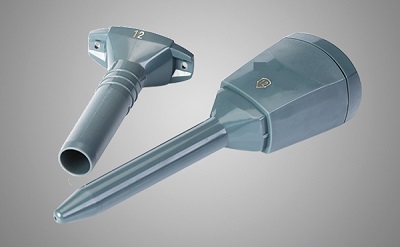The disposable pleural puncture apparatus is used together with the endoscope to establish the access channel of the instrument through puncture in the pleural endoscopic surgery.
Thoracoscopic trocar's characteristics
1. Simple operation, easy to use.
2. Blunt puncture, small damage to skin and muscle tissue.
3. The surgical incision is smaller, more in line with the concept of minimally invasive.
4. The puncture cannula is fixed firmly, and the instrument can be kept stable in and out.

Thoracoscopic trocar's use
1. Keep the patient in a position that can be friendly for surgery, face the back of the chair, and put his forearms flat on the back of the chair. Forehead on forearm. Can not get up, desirable semi-sitting supine position, the affected side of the forearm placed in the occipital.
2. Puncture and air extraction decompression:
(1) The chest puncture pumping liquid, undertake chest percussion, first choice real parts for piercing sound obvious, it is worth noting that the puncture point can use gentian violet, the puncture, generally there are four, respectively is: shoulder Angle at the foot of the line between 7-9 ribs, axillary line after 7-8 intercostals, axillary midline between 6-7 rib, axillary between the front 5 a 6 ribs.
(2) Pneumothorax suction decompression: The puncture site is generally the second costal space of the affected side midclavicular line or the 4-5 costal space of the midaxillary line.
3. Sterilize the skin at the puncture point to be punctured with iodine and alcohol, and the disinfection range is about 15cm. When opening the puncture bag, pay attention to the medical instruments in the bag and check whether the puncture needle is smooth.
4. Local anesthesia was performed by extracting 2% procaine 2cm with a 2cm syringe from the upper edge of the ribs at the puncture point for local anesthesia from the skin to the parial pleura. Before injection, the anesthesia should be pumped back, and no gas, blood or pleural fluid should be observed before injection.
5. Start of puncture: First, clamp the rubber tube behind the puncture needle with hemostatic forceps, fix the local skin at the puncture site with the left hand, hold the puncture needle (wrapped with sterile gauze) with the right hand, and Pierce it vertically and slowly along the anesthetic site through the upper edge of the ribs. When the resistance of the needle tip suddenly disappears, it indicates that the tip has entered the pleural cavity, and attach a 50M1 syringe. The assistant releases the hemostatic forceps and assists in fixing the puncture needle with the hemostatic forceps. After the syringe was filled, the assistant clamped the hose with hemostatic forceps and removed the syringe. Pour the liquid into the container, measure it and send it for laboratory inspection.
Post time: Oct-11-2022





